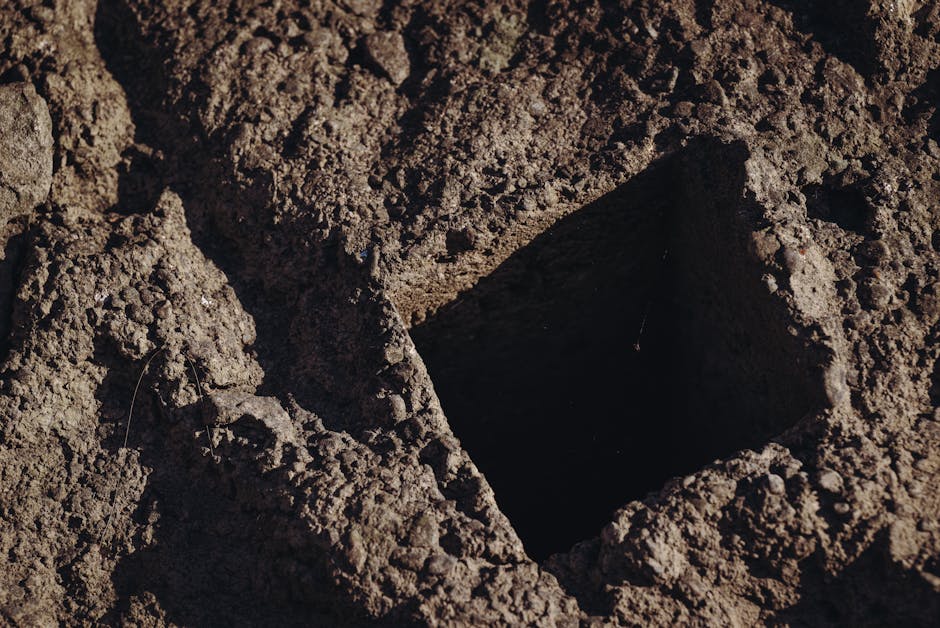Why the Earth Is Not Hollow Scientific Evidence That Ends the Debate
Myths, conspiracy theories, and speculative fiction have kept the belief in a hollow Earth alive for centuries. Despite extensive scientific research and evidence to the contrary, some still argue for the existence of vast subterranean worlds beneath our feet. However, modern geology, physics, and astronomical observations provide conclusive proof that the Earth is a solid, layered structure. From seismic wave studies to gravitational measurements, scientists have compiled overwhelming evidence that debunks the hollow Earth theory once and for all. This data clearly shows why the hollow planet theory lacks scientific support.
Seismic Evidence: Earth's Interior Structure
One of the strongest pieces of evidence against a hollow Earth comes from seismology. When earthquakes occur, they generate seismic waves that travel through the planet's interior. Studying the movement of these waves allows scientists to determine the Earth's internal composition and density.
Seismic waves come in two primary types: P-waves (primary waves) and S-waves (secondary waves).

P-waves can travel through both solid and liquid materials, while S-waves can only move through solids. When studying earthquake data, geophysicists have found that S-waves do not pass through a specific region deep inside the Earth, this is how they identified the existence of a liquid outer core.
If the Earth were hollow, seismic waves would behave very differently than observed. Rather than uniform wave refraction and shadow zones from material density shifts, anomalies would reveal empty space. The fact that seismic data aligns perfectly with a solid planetary structure confirms that the Earth cannot be hollow.
Gravity and Mass Distribution
A fundamental challenge to the hollow Earth idea is its inconsistency with basic gravitational principles. A planet’s gravitational force depends on its mass. If Earth were hollow, its mass would be significantly lower than what is currently measured, which would drastically alter its gravitational pull.
Satellite gravity data from NASA’s GRACE mission indicate that Earth’s mass is arranged as if it were a solid sphere with a dense interior. The variations in gravitational strength across different regions of the planet further reinforce this model.
A hollow planet would not have sufficient mass to maintain its current orbit around the Sun or exert the observed gravitational force on objects at its surface. This discrepancy alone disproves any notion of an empty interior.
The Study of Earth's Layers
Geological research over centuries has led to a well-established model of Earth's internal structure. The planet consists of distinct layers:
| Layer | Composition | Depth Range |
|---|---|---|
| Crust | Solid rock (continental and oceanic crust) | 0 - 70 km |
| Mantle | Semi-solid silicate minerals | 70 - 2,900 km |
| The layer beneath the Earth's mantle, composed primarily of molten iron and nickel. | Liquid iron and nickel | 2,900 - 5,150 km |
| Could you please provide the full original sentence? I’d be happy to rewrite it while maintaining clarity and engagement. | Solid iron-nickel alloy | 5,150 - 6,371 km |
This structure has been confirmed through direct sampling (such as deep drilling projects), seismic analysis, and laboratory simulations replicating high-pressure conditions found inside the planet.
The Magnetic Field and Its Origins
The presence of Earth’s magnetic field further disproves any notion of a hollow interior. Our magnetic field is generated by movements within the liquid outer core, a process known as the geodynamo effect.
If Earth were hollow, its density would be too low to support this process. Without a strong inner structure composed primarily of molten metals in motion, there would be no mechanism to create and maintain such a powerful magnetic field.
The consistency of Earth's magnetic field over time has been studied using ancient rock formations containing iron minerals that aligned with past magnetic orientations. These findings align perfectly with our understanding of Earth's internal composition rather than any alternative theories involving an empty planetary shell.
Astronomical Comparisons With Other Planets
If Earth were hollow, similar structures should be observed in other celestial bodies. Astrophysical models indicate that planets take shape as solid or layered spheres, with gravity compressing material during their formation.
- The Moon's density measurements indicate it has an internal structure similar to Earth's.
- Mars rovers have provided geological data confirming a solid planetary interior.
- The gas giants like Jupiter and Saturn have dense cores beneath their thick atmospheres.
- Meteorites found on Earth often contain material from differentiated planetary bodies with cores similar to ours.
No observed celestial body supports the idea of a naturally occurring hollow planet. All evidence from planetary science suggests that such structures are physically impossible under normal astrophysical conditions.
The Misconceptions Behind Hollow Earth Theories
The concept of a hollow Earth originated from folklore and early scientific speculation before modern geology developed. In the 17th century, Edmond Halley and other writers suggested early versions of this concept using the limited observational data available.
The theory gained popularity again in the 19th and 20th centuries through fictional works such as Jules Verne’s Exploring the Earth's Deepest Layers. Conspiracy theories further spread misconceptions despite overwhelming scientific contradictions.
No credible scientific institution supports claims that challenge well-established geological principles. The persistence of these ideas largely stems from misunderstandings about Earth's structure rather than genuine scientific debate.
The Final Verdict on Earth's Structure
The overwhelming body of scientific evidence confirms that Earth is not hollow. Seismic wave analysis proves the presence of multiple internal layers rather than empty space. Gravity studies demonstrate that Earth's mass distribution aligns with expectations for a solid planet. Earth's magnetic field forms through interactions in its dense metallic interior. Comparisons with other planets show that natural processes do not create large, hollow interiors.
The persistence of hollow Earth theories is rooted in historical misconceptions rather than valid scientific inquiry. As research continues to refine our understanding of planetary interiors, these outdated ideas hold no place in legitimate discourse about Earth's composition.
NASA.gov USGS.gov